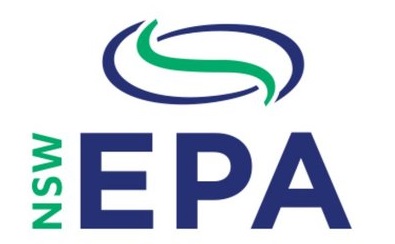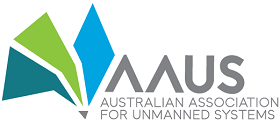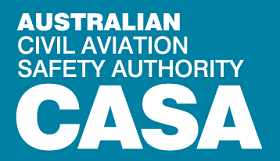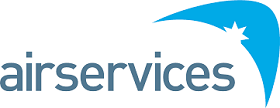Overview
 Beyond Visual Line of Sight Training Course
Beyond Visual Line of Sight Training Course
Suas Rov’s Beyond Visual Line of Sight theory training prepares the student for the CASA BVLOS OCTA (Outside of Controlled Airspace) exam.
The course offers an alternative to the CASA IREX exam for Beyond Visual Line of Sight operations and is a requirement for Remote Pilots wishing to operate BVLOS.
 What is BVLOS?
What is BVLOS?
BVLOS, or Beyond Visual Line of Sight refers to the operation of drones when the pilot or person in command does not have direct visual line of sight with the drone. Drones operated under BVLOS conditions are usually assisted by airspace management software and a number of connections to the internet.
Benefits of BVLOS operations include the following:
- Access to remote and dangerous locations
- Coverage of larger operational areas
- Increased operation efficiency and frequency
- Cost saving by replacing traditional methods
Delivery Method
The theory is delivered online via Zoom, under the guidance of our expert Instructor.
 BVLOS Learning Outcomes
BVLOS Learning Outcomes
- Preparation for the CASA BVLOS (OCTA) exam in accordance with CASA syllabus of training Standard BVLOS procedures
- Location-specific BVLOS procedures
- SORA introduction Content
- CASA BVLOS OCTA aeronautical knowledge standards
- BVLOS specific procedures Assessments Practise exams for the CASA BVLOS (OCTA) exam
- Pre-requisite CASA Remote Pilot Licence
 Qualification outcomes
Qualification outcomes
The training prepares the candidate for the CASA BVLOS OCTA exam
Benefits Of Studying This Course
![]()
Holders of the BVLOS OCTA Certification can work on complex missions with industry leaders who are driving the future of this new and rapidly expanding industry.
Employment Opportunities
![]()
Past students now work across many industries including:
- First Responders
- Fire Fighters
- Health Care Professionals
- Agriculture, Forestry and Viticulture
- Environmental Management, Land Management and Wildlife Protection
- Surf Life Saving and Shark Spotting and Photography
- Coastal Management, Marine and Fisheries, Water Resource Management
- Data Acquisition, Analytics and Data Science
- Technology and Mechatronics
- Surveying, Construction, Architecture and Asset Management
- Resources Management, Mining, Health and Safety and Defence
- Remote Communities, Protection of endangered and sensitive sites & Tourism
With new applications and use cases being developed constantly, the opportunities are almost limitless!
About The Sector
![]()
The Remote Aviation Industry is one of the fastest growing industries worldwide. In Australia, we have witnessed exponential growth every year with many companies now struggling to attract and retain experienced and qualified Remote Pilots.
In 2018 we hardly ever saw a role advertised for a Chief Remote Pilot, this year, we have seen almost a dozen Chief Remote Pilot Roles with Salaries well over the $200K mark for suitably qualified individuals.
Remote Pilots must consider the other skills and practical expertise they will bring to the market in order to make them stand out, have your technical skills or IT experience? If not, is there a course available to build these micro qualifications? Remember, in a rapidly growing industry, the needs and expectations of employers and clients will also continue to grow and develop, so it is key to keep on top of industry developments and changes to regulations.
At Suas Rov we see education as a life-long journey, we are proud of our great record and as both a CASA Certified Training Organisation and a Registered Training Organisation (RTO), we are the perfect partner to help you build your skills and grow your brand in this industry.
Curriculum
Suas Rov has developed a comprehensive BVLOS course, specifically designed to ensure that you gain the knowledge required to successfully complete your CASA BVLOS (OCTA) Course.
Our course provides all of the relevant information sources and guides learners, step by step, through procedures and best practices to assess, plan and execute missions in BVLOS conditions.
Course Units
![]()
The course will identify and expand on the following items contained in the knowledge standards;
- Privileges and limitations
- Supporting documents and information
- RPA instruments, radios and equipment
- Meteorology relevant to BVLOS operations
- BVLOS operations – general
- Operations outside of controlled airspace (OCTA)
- Navigation with global navigation satellite systems (GNSS)
Course Duration
![]()
The course is delivered on-line over two consecutive days
Learning Materials
![]()
Students will receive a comprehensive learning pack that references all of the key information sources, necessary to successfully plan and execute missions under BVLOS conditions.
Assessment Types
![]()
On successful completion of the course, students will attend a CASA approved examination centre to complete the BVLOS (OCTA) examination.
To book your exam:
- Go to casa.aspeqexams.com/home
- Select "Exam schedule".
- Under specialisation click "RePL examinations" and select "ReB1".
- Find your preferred time and location.
What you’ll need
Before sitting the exam, you must show a current photographic identification document (ID).
Learn more about acceptable photo ID for exams.
The exam consists of 30 multiple choice questions and is a closed-book, supervised examination.
Certification / Recognition
![]()
On successful completion of the course, students will be able to progress towards their CASA BVLOS (OCTA) Examination.
Requirements
Learner Requirements
![]()
Prior to registering for this course you must have obtained your CASA Certified Remote Pilot's Licence (minimum 7KG)
Aviation Reference Number (ARN)
![]()
It is a prerequisite for students wishing to complete this course that they hold an Aviation Reference Number.
Aviation Reference Number (ARN):
CASA requires all licensed personnel to hold an Aviation Reference Number (ARN) . This is how CASA uniquely identifies you and records your training and license credentials, you must hold an ARN in order to sit your remote pilot's license exam. There are two types of ARN, an individual ARN and a Company ARN. If you are considering Commercial Operations we would recommend that you get both, then you can add it to your company in the future.
Link to CASA website ARN request form (online): CASA ARN Application
Recognition of Prior Learning (RPL)
![]()
There is no recognition of prior learning for this course
Funding and Fees
Course Fees
![]()
Course fees can be found on our Course Pricing page
Why Suas Rov
Further Education and Career Pathways
![]()
When you complete this course, you may want to enhance your skills and knowledge and your job promotion prospects by going on to study:
- AVI30419 Certificate III in Aviation (Remote Pilot) - Learn more here
- CASA Remote Pilot's Licence (25KG Upgrade) - Learn more here
- Aeronautical Radio Operator's Certificate (AROC) - Learn more here
- Remote Operator's Certificate (ReOC) - Learn more here
University Pathways
















